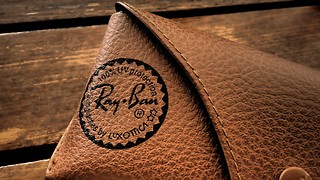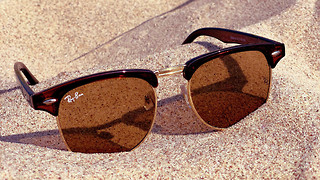Trees, cubes, and human rights
Daan Schneider explores Ai Weiwei’s art on display at Downing

You might not always be able to tell, but it’s summer in Cambridge, and the trees in front of Downing College chapel are a lush green. Except for some of them. The clinically neoclassical atmosphere of Downing’s main court is temporarily disturbed as graduating students in weird hoods are taking selfies not with the majestic chestnut trees that are always there, but with some rather ominous looking leafless ones: seven beautiful monstrosities placed right in front of the chapel. They are Ai Weiwei’s Trees (2009-2010), tree-like constructions of dead pieces of wood crudely bolted together, part of the new Heong Gallery exhibition Ai Weiwei: Cubes and Trees (running from 17 June until 9 October). This is the first time the work of the famous Chinese artist is on display in Cambridge and as such serves as a well-executed introduction to his diverse artistic praxis.
It is hard to think of a better place in Cambridge for Ai Weiwei’s eerie trees than Downing College. The vast emptiness of the court has always felt sort of alienating, and the uncanny nature of the disjointed trees works beautifully with the faceless grandeur of the college buildings. (The only contender for a more fitting surrounding is perhaps Churchill College, but the trees would probably fit in too well with the already abstract-looking college grounds, diminishing their disruptive power.)
Ai Weiwei has the curious ability to infuse minimalist and conceptual art with historical significance, adding a political dimension to otherwise primarily aesthetic forms. The trees are composed of pieces of wood from different types of trees, some of them hundreds of years old, which Ai purchased on a market in Jiangxi province. Putting them together in such a rough and unpolished way – rusty nuts and bolts are clearly visible – results in a rather disorienting experience. The sculpture certainly looks like a tree, but is it one? The work has sometimes been compared to China’s ‘One China’ policies: the government’s forced attempts to unite different ethnicities and cultures under one harmonious Chinese nation, resulting in a botched, semi-cohesive entity.
Inside the Heong Gallery we find the other main half of the exhibition: Ai Weiwei’s Cubes. Its surroundings are similarly flattering to the artworks on display; the geometric shape of the building seems almost made for the four 1 metre cubed blocks which dominate the room and exude a powerful physical presence in the brightly lit space. With these cubes, Ai imbues abstraction with cultural significance, referencing post-war American Minimalism but simultaneously creating a strong sense of ‘Chineseness’ through his use of material: one cube is made out of crystal, another of dark rosewood boards (not ebony, as its title Cube in Ebony suggests), the next is a block of compressed traditional pu’er tea (which is the preferred method of storing and shipping this type of tea), and the last is a more intricate-looking puzzle made out of huali, a type of wood used in Ming Dynasty furniture-making. The anachronistic and dislocating effect of incorporating Chinese traditional craftsmanship into minimalist and conceptual art results in a kind of uprooting of Chinese identity, putting traditional ‘Chineseness’ into dialogue with the modern world, a gesture some will recognise from Ai’s famous Sunflower Seeds in the Tate Modern.
In the reception room of the gallery, we find some smaller artworks which form an introduction to Ai Weiwei’s more politically charged work. Unfortunately, the room doesn’t do justice to the sharp human rights activism Ai is sometimes known for, and feels more like an afterthought. The room’s walls are decorated with a middle finger-themed wallpaper which lazily references Ai’s earlier Study of Perspective (1995-2003), a series of photographs in which Ai gives the finger to symbols of power throughout the world. Whereas the original photographs were a powerful statement, their wallpaper derivative feels somewhat self-involved.
Another piece in the reception area is the previously unseen video of Ai Weiwei floating on an inflatable raft in the Mediterranean Sea, which is the result of his setting up a studio on the island of Lesbos to make a documentary about the refugee crisis. Although this meditative short film certainly looks interesting, one might ask whether a real concern for the fate of the refugees is not eclipsed by the overshadowing presence of the world-famous artist, a criticism that was raised earlier with regards to a photograph in which Ai posed as the dead Syrian child Alan Kurdî, washed up on the Turkish shore. The grace of his earlier politically charged works – such as the gathering of some 5000 names of child victims of the 2008 Sichuan earthquake which the Chinese government failed to investigate and the backpack-themed art he made in its wake – seems to be absent here.
Finally – and this is a stroke of genius – Ai’s 150-hour-long film Beijing 2003 is screened continuously in Downing’s Porters’ Lodge. The film shows the endless streets of Beijing, shot from a van which Ai drove around the city for 16 days in an attempt to map its many hutongs, narrow residential alleyways, many of which got demolished to make space for urban development. Deputy Head Porter Dave Mahony confirmed that they actually let it play throughout the night, so people can indulge in a mesmerising excursion through mazy Beijing around the clock, witnessing the curious parallel of the past dwelling of Beijing citizens and the simultaneous to and fro of people at Downing College Porters’ Lodge.
It is for the viewer to decide whether the University of Cambridge surroundings sit perhaps somewhat uncomfortably with the iconoclast Ai Weiwei, or whether Cambridge is in fact the perfect place for his art to find expression. In any case, we should thank curators Rachel Rose Smith and John Tancock for bringing Ai Weiwei to Cambridge, which apparently took years of preparation. Though conceptual unity is perhaps somewhat wanting, Ai Weiwei: Cubes and Trees is a valid introduction to an important artist and is sure to stir up a town which is otherwise lacking in outlets for contemporary art.
 Comment / Plastic pubs: the problem with Cambridge alehouses 5 January 2026
Comment / Plastic pubs: the problem with Cambridge alehouses 5 January 2026 News / Cambridge businesses concerned infrastructure delays will hurt growth5 January 2026
News / Cambridge businesses concerned infrastructure delays will hurt growth5 January 2026 News / Cambridge academics stand out in King’s 2026 Honours List2 January 2026
News / Cambridge academics stand out in King’s 2026 Honours List2 January 2026 News / AstraZeneca sues for £32 million over faulty construction at Cambridge Campus31 December 2025
News / AstraZeneca sues for £32 million over faulty construction at Cambridge Campus31 December 2025 Interviews / You don’t need to peak at Cambridge, says Robin Harding31 December 2025
Interviews / You don’t need to peak at Cambridge, says Robin Harding31 December 2025









